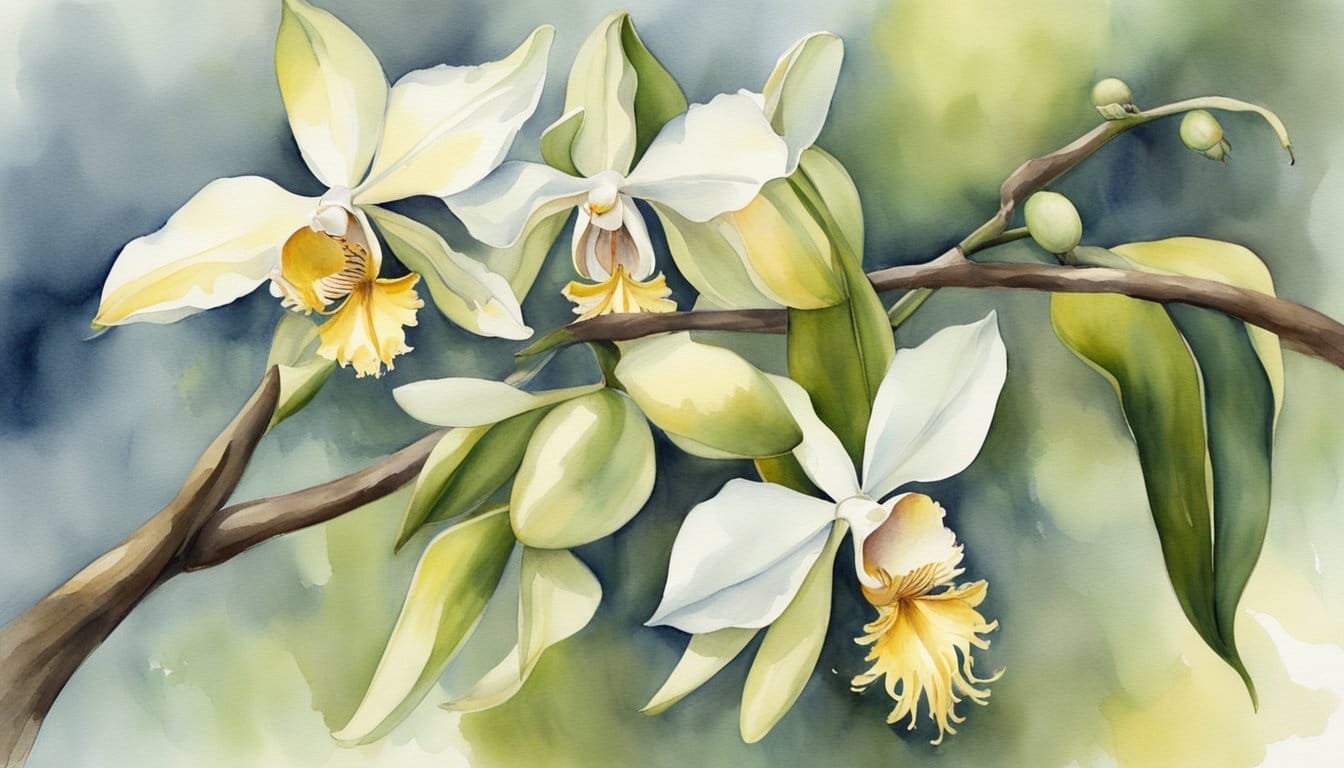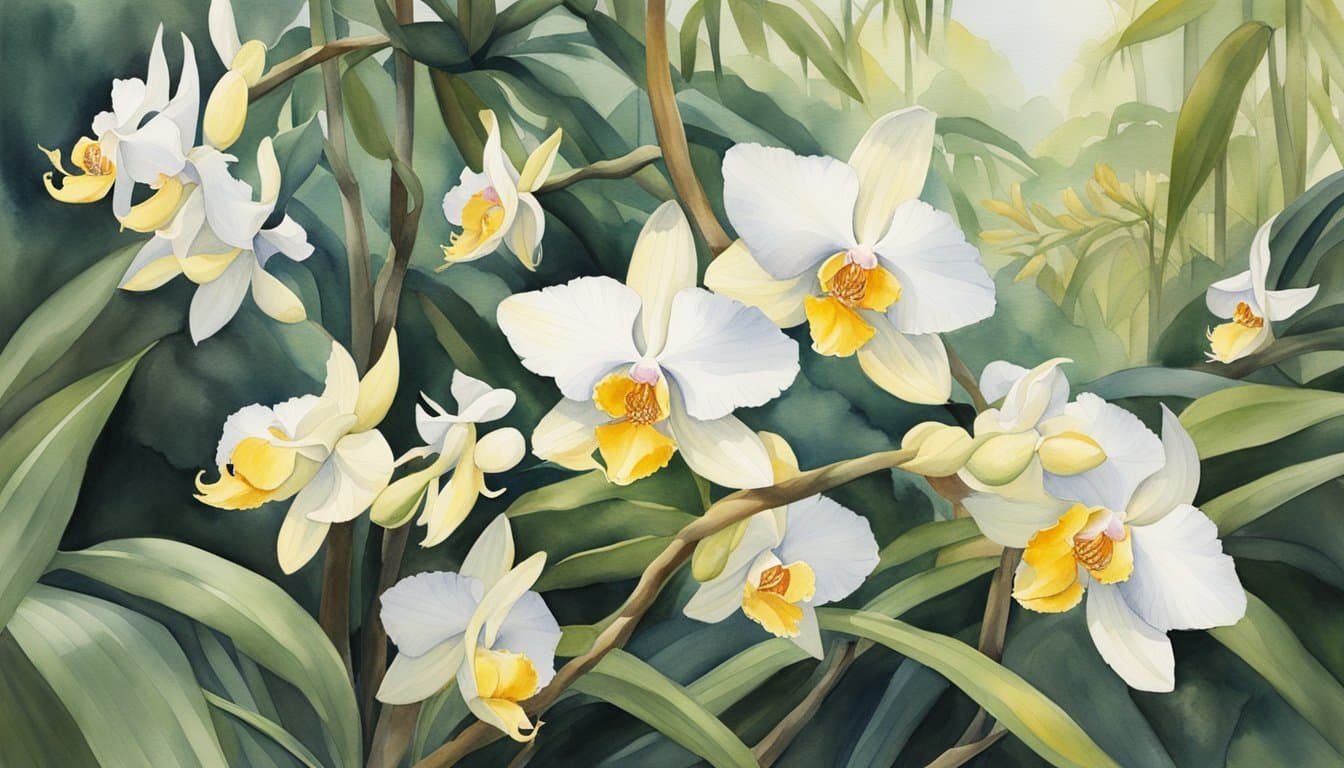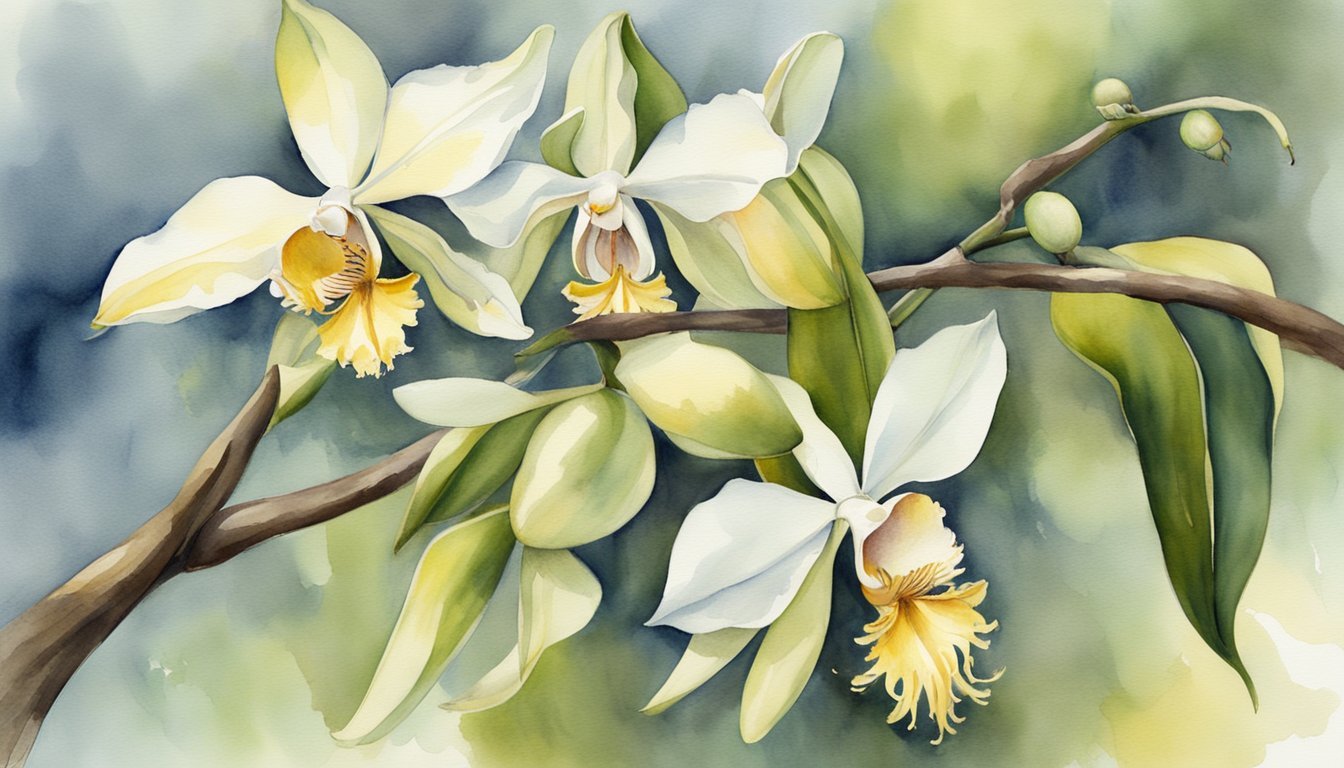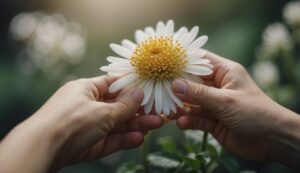The Origins of Vanilla Flavor
Vanilla flavor has captivated taste buds for centuries and its journey starts from the delicate orchid flowers to the coveted dark pods known for their enchanting scent and flavor.
Natural Vanilla Sources
Vanilla comes from the seed pods of vanilla orchids.
There are over 150 varieties of vanilla orchids, but the Vanilla planifolia species, native to Mexico, is the primary source of commercial vanilla flavor.
This species is also cultivated in regions like Madagascar, which is now the largest producer of vanilla in the world, and others such as Indonesia and Tahiti.
Vanilla Cultivation and Harvesting
Vanilla orchids thrive in warm, humid climates near the equator.
Growing the vanilla bean is labor-intensive as the flowers must be hand-pollinated, a technique first mastered in Mexico. Madagascar and Indonesia are leading producers, where skilled workers pollinate the orchid blossoms by hand.
The vanilla beans, which are actually seed pods, are harvested while still green and need to undergo a meticulous aging and curing process to develop their full flavor.
Vanilla Processing and Extraction
After vanilla beans are harvested, they are cured and dried, a process integral for developing the rich flavor and aroma characteristic of real vanilla.
The main compound responsible for vanilla’s signature taste is vanillin.
Vanilla beans contain numerous other compounds that contribute to its complex profile.
Pure vanilla extract is made by soaking the vanilla pods in alcohol, which pulls out the flavor compounds from the beans.
This elaborate process ensures the creation of the rich, high-quality vanilla flavor cherished worldwide.
Commercial Vanilla Flavoring

The journey of vanilla flavoring from tropical orchid to tasty treats is a fascinating tale of chemistry and commerce.
Whether it’s adding that smooth, creamy taste to ice cream or giving cookies a rich aromatic punch, commercial vanilla flavoring is a staple in kitchens and food factories around the world.
Artificial Vanilla Flavor Production
The star of the artificial vanilla show is synthetic vanillin, a compound that mimics the flavor of natural vanilla.
Chemists produce synthetic vanillin from various materials, including petrochemicals, wood pulp, guaiacol, or lignin.
Unlike natural vanilla, which involves a labor-intensive process of growing and curing vanilla pods, artificial vanilla flavoring streams from labs and vast reactors.
A common method involves synthesizing vanillin from guaiacol with oxidizing agents.
Another rising method taps into lignin, an organic polymer found abundantly in wood pulp, which is a by-product of the paper industry.
This versatility explains why imitation vanilla, also known as artificial vanilla or artificial vanilla flavoring, has claimed its place as a cost-effective alternative in food production.
Regulations and Standards
When it comes to regulations, the U.S. Food and Drug Administration (FDA) has a clear stance on what constitutes pure vanilla extract versus artificial flavoring.
Pure vanilla extract must come from the vanilla pod and meet specific criteria for alcohol and vanilla bean content.
In contrast, artificial vanilla flavoring is categorized as a food additive.
Products containing artificial vanilla should list it on the ingredient list as such, enabling consumers to distinguish between natural vanilla flavor and artificial vanilla flavoring.
Moreover, to label flavors as “natural flavoring,” the FDA mandates that these additives must be derived directly from plant or animal sources.
Thus, terms like “natural” or “pure” on the packaging are not just marketing jargon; they denote adherence to these standards.
As the appetite for clear ingredient labeling grows, the distinction between pure vanilla extract and artificial counterparts becomes ever more prominent on the shelves.
Economic and Ecological Aspects
The vanilla industry is uniquely complex, involving both high economic stakes and significant ecological considerations.
It’s not just about the flavor; it’s a tale of labor-intensive cultivation, market volatility, and the quest for sustainability.

Vanilla Market Dynamics
Vanilla, particularly Vanilla planifolia, is a climbing orchid renowned for its pods that, after a meticulous curing process, deliver the coveted vanilla flavor.
Known as the second most expensive spice after saffron, its value is reflected in the labor-intensive process of hand-pollination, which can only be performed during a few hours each morning when the flowers are open.
Despite its significance, the vanilla market is famously volatile.
Prices can skyrocket due to natural disasters like cyclones impacting the major production areas, such as Madagascar, or plummet with the introduction of synthetic alternatives.
This boom-and-bust cycle highly influences the livelihoods of small-scale farmers.
Environmental Impact and Sustainability
Growing and processing vanilla has tangible effects on the environment.
The cultivation of vanilla, particularly that of organic vanilla, relies heavily on intact and healthy ecosystems.
These orchids thrive in a delicate balance with their surroundings, requiring specific conditions that cannot be replicated easily elsewhere.
Efforts toward environmental sustainability are vital, as the reliance on natural vanilla can put a strain on land and water resources.
Sustainable practices include promoting biodiversity, using organic farming techniques, and improving the efficiency of water use.
Moreover, better curing and processing methods of vanilla aim to reduce waste and make the most of the entire plant, thereby lessening the ecological footprint of vanilla production.
It’s a fascinating dance of delicacy and strength, where the unassuming vanilla pod—available in every grocery store—hides a world of intricate socio-economic networks and ecological dependencies.




